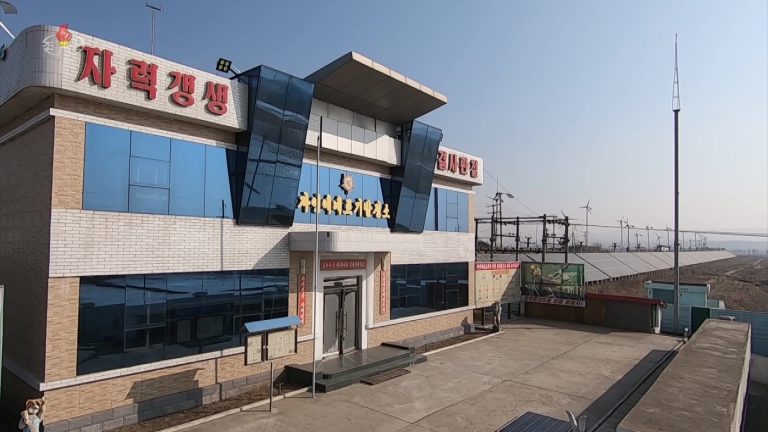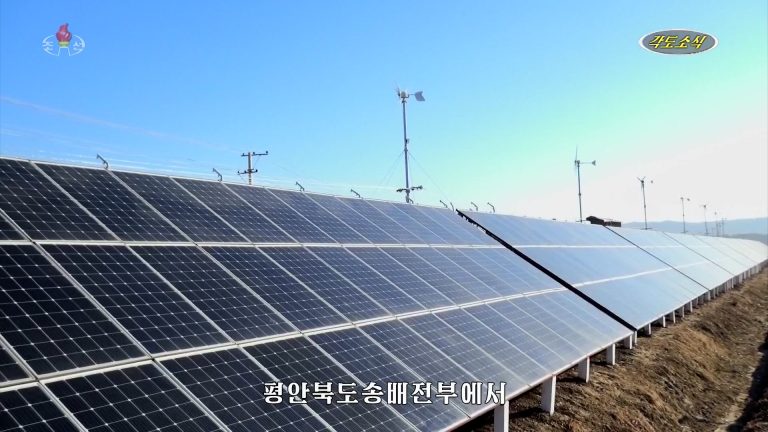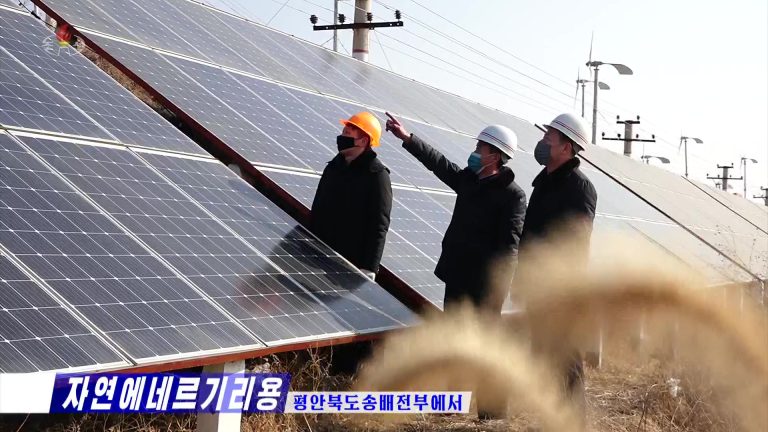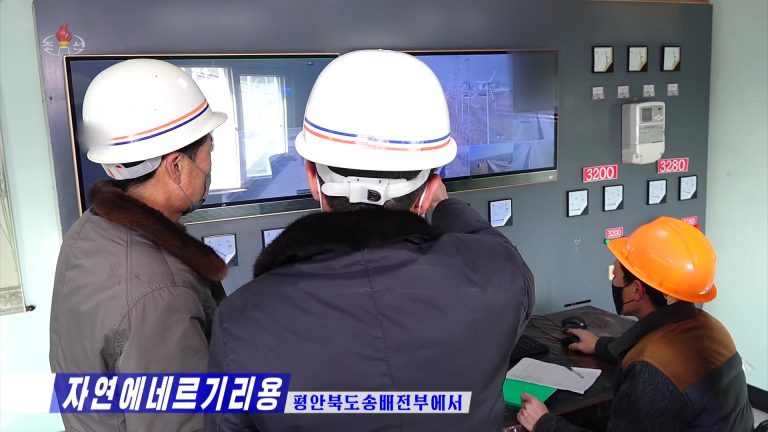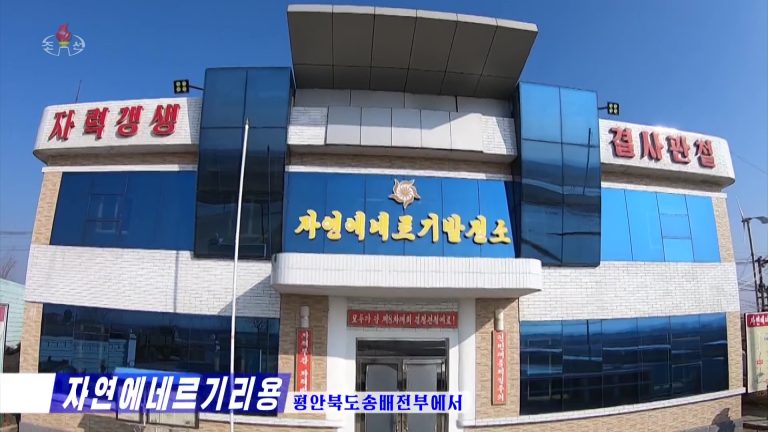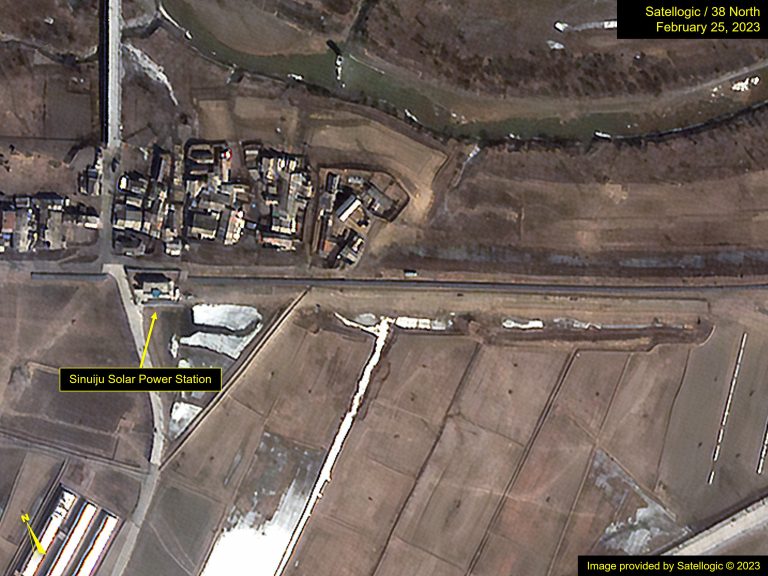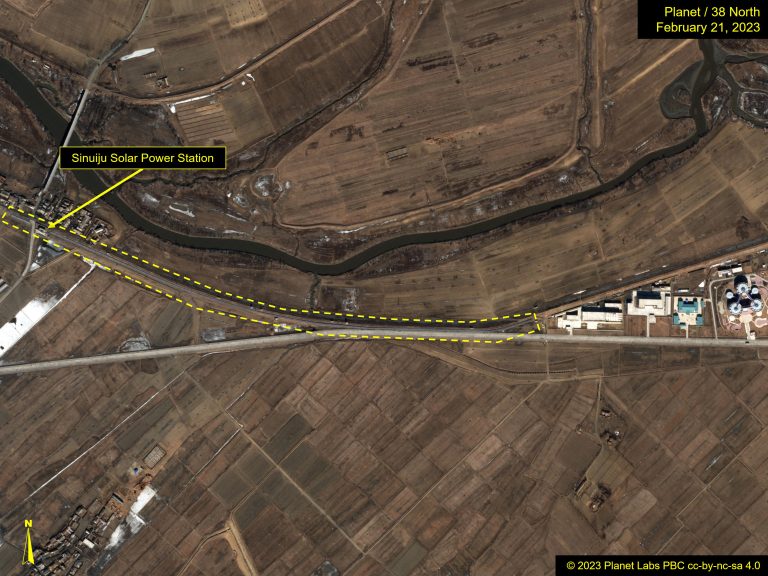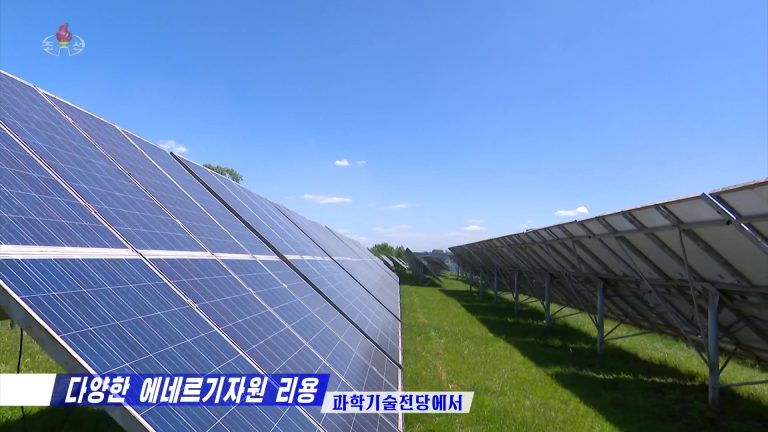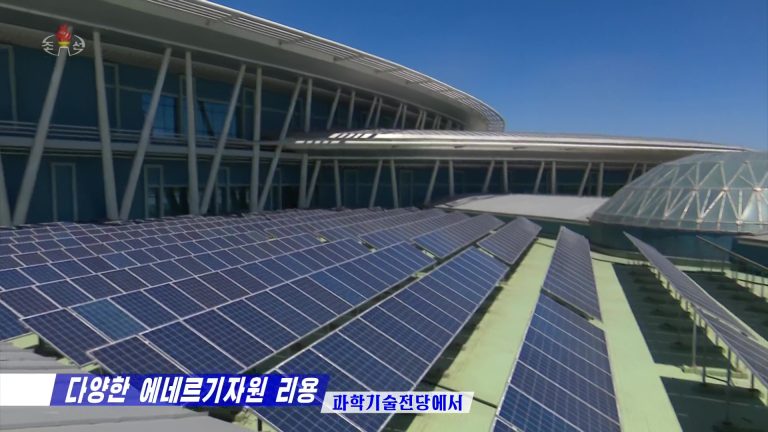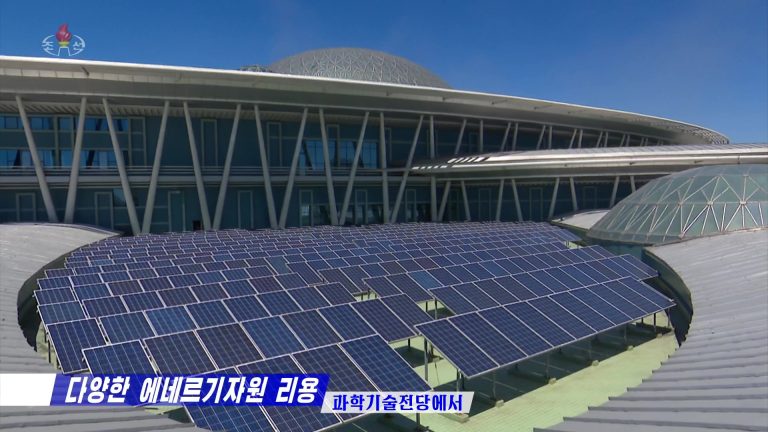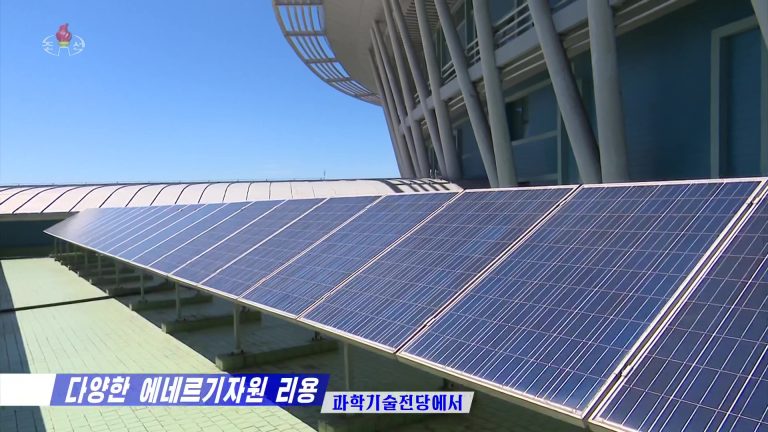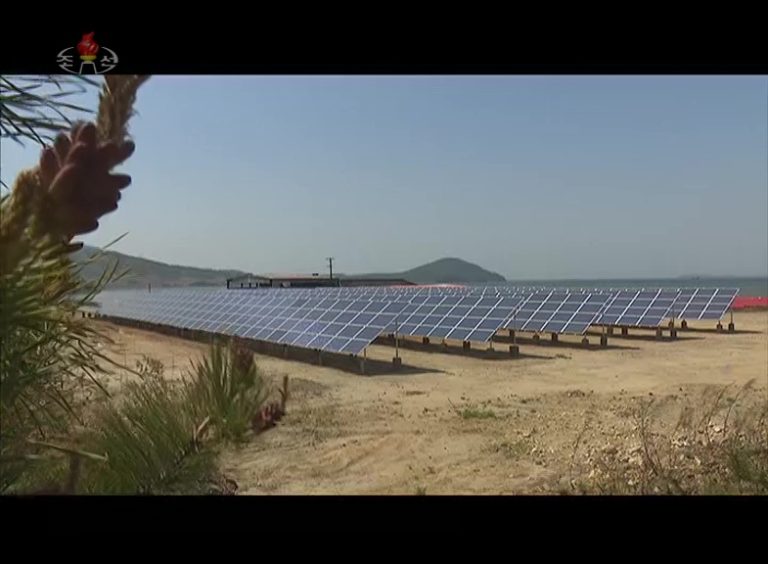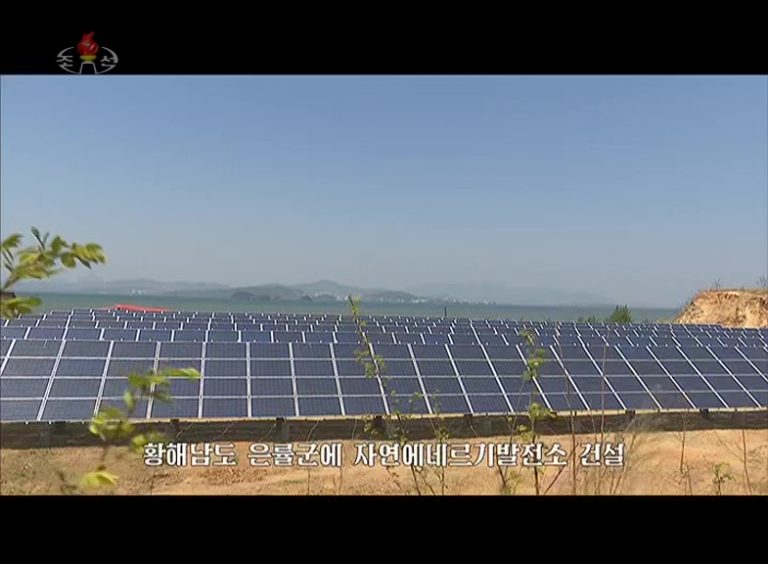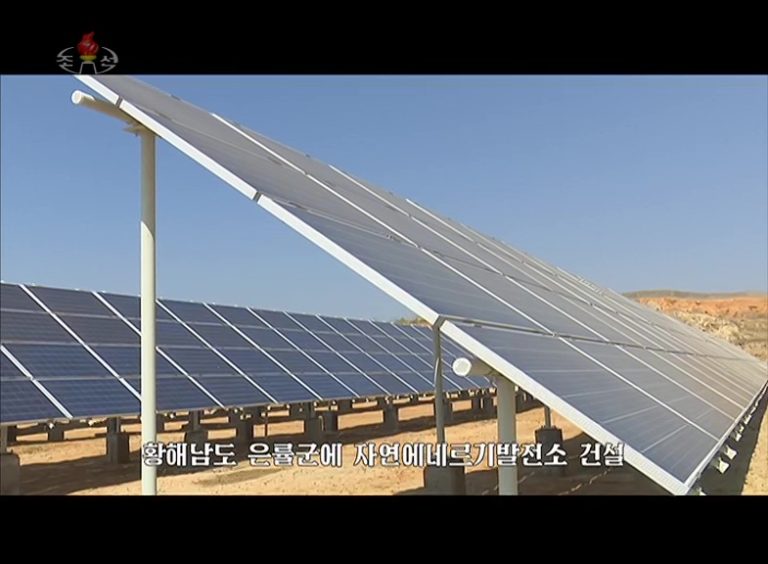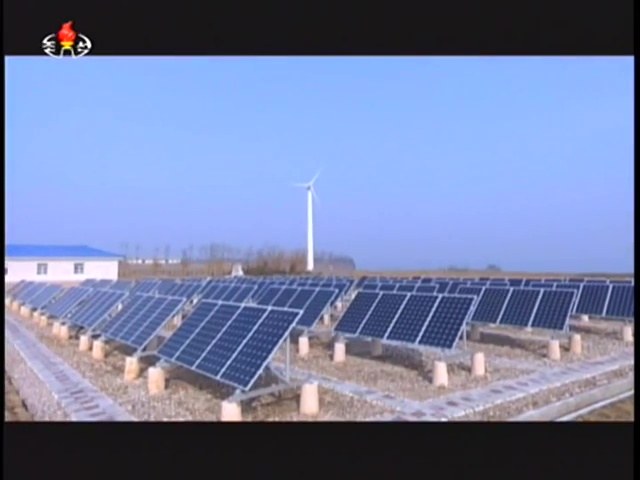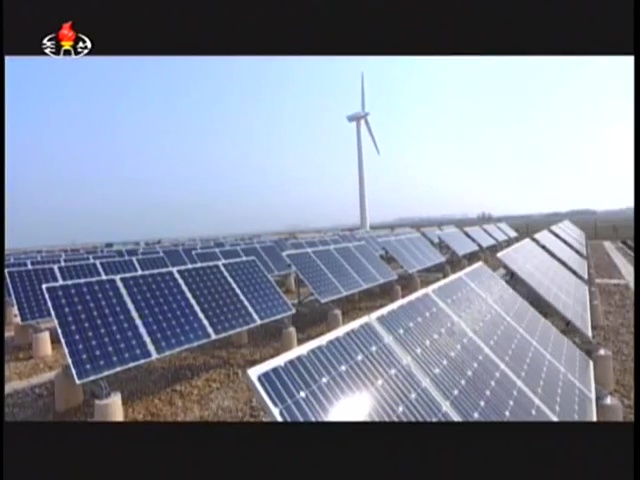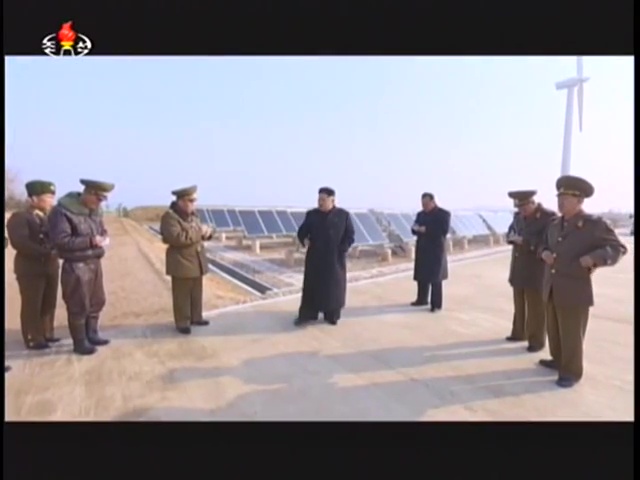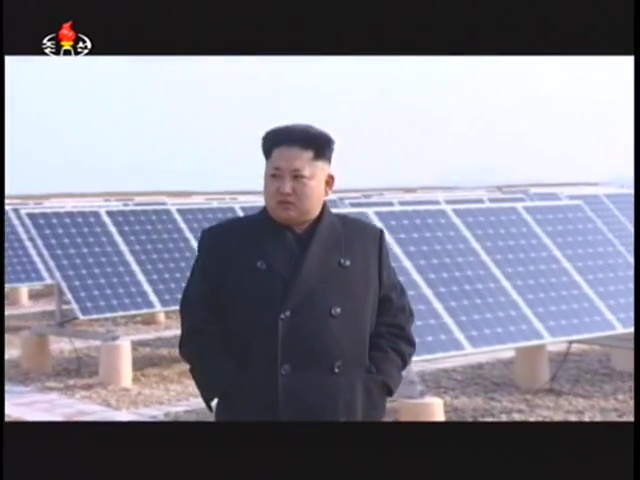North Korea’s Energy Sector: Notable Solar Installations
In the last installment of our series on North Korea’s energy sector, we looked at state development of solar power and panels and discussed how solar was beginning to contribute power to the electricity grid rather than just the building on which the panels were installed.
In this installment, we will examine the largest and most notable solar energy plants in the country. Unlike major hydropower projects in North Korea—some of which have taken upwards of 40 years to complete, solar power plants can be set up relatively quickly to serve both local needs and feed excess energy into the grid. Furthermore, there is ample land in the country suitable for solar power generation, making its potential limited only by the country’s own ability to manufacture and/or acquire the solar panels itself.
Given these realities, we can expect to see more solar power projects in the future as the country’s solar energy policy evolves and strives to reduce dependency on external energy sources and increase the domestic energy supply.
Practical Considerations for Solar Power Development
North Korea is 148th out of 211 countries and territories in terms of its solar potential, according to World Bank data that ranks the practical potential for solar power generation in countries around the world.[1]
Based purely on sunlight, the most suitable areas of North Korea are across the mountain ranges that make up most of the interior of the country.
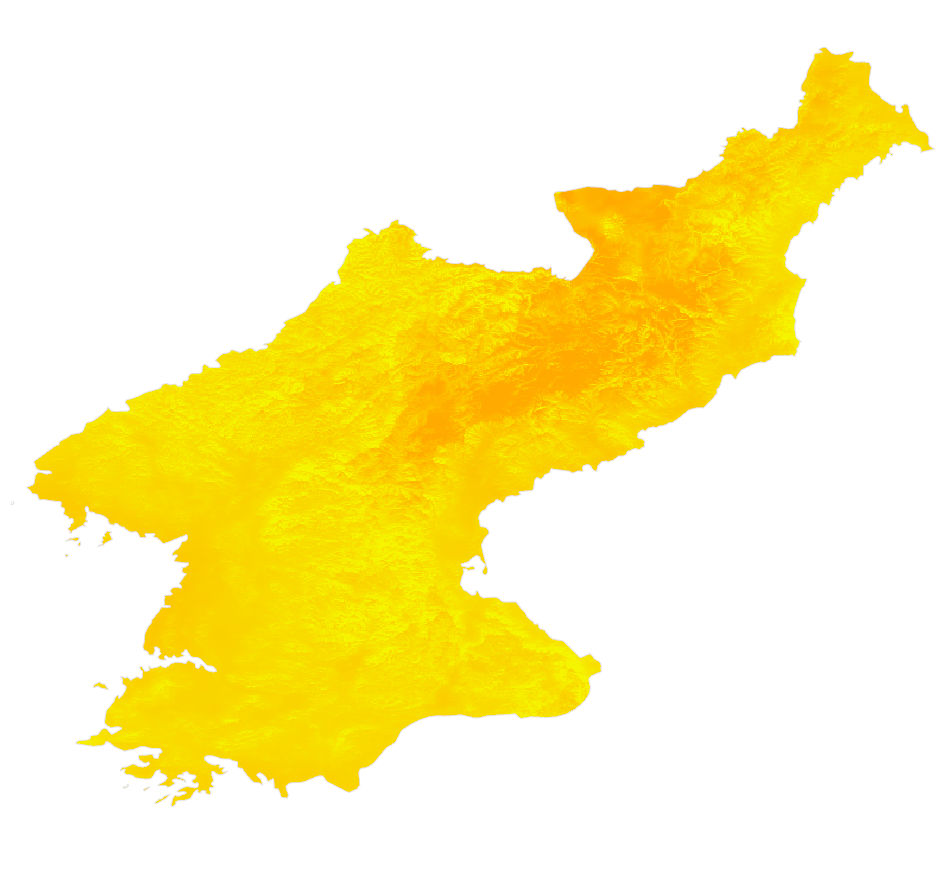
However, much of this area is unsuitable for solar power stations due to rugged terrain, forests and the far distance from major urban centers. The World Bank study excludes such areas and those that are already industrialized, and with those restrictions taken into account, the following map illustrates areas most conducive to solar power generation in North Korea.[2]
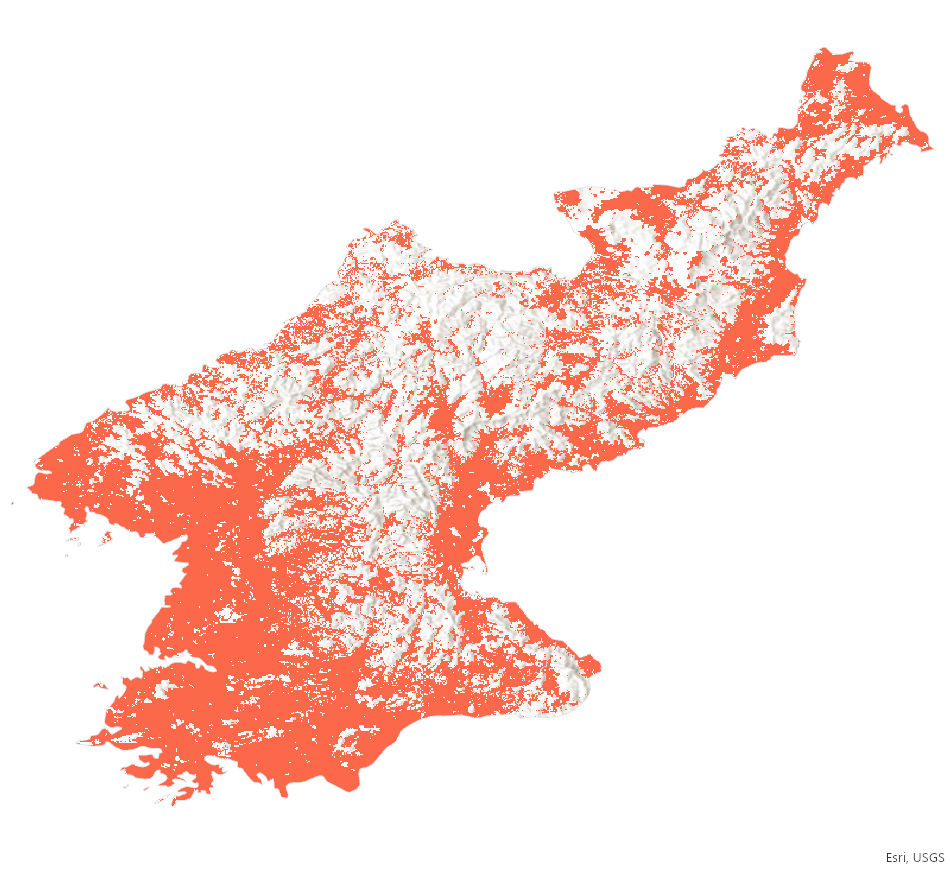
It is perhaps not a coincidence that the country’s largest solar power installations, or those judged most important due to attention from national leadership, all fall within the designated areas.
Sinuiju Solar Power Station
One of the largest solar plants in the nation is operated by the North Phyongan Provincial Power Distribution Station (평안북도송배전부에서) in Sinuiju. It sits near a small tributary to the Yalu River and currently consists of 75 multi-panel solar arrays arranged side-by-side to cover a 1.2-kilometer stretch of land to the east of the city, making it the largest solar power plant in the country that feeds exclusively into the electricity grid.
Construction of the control building began in June 2019, and by that September, a kilometer of solar arrays had been installed end-to-end on land adjacent to the building. At that time, state media reported the combined solar and wind generation capacity of the plant was 1,000 kilowatts (kW).
The plant was expanded with an additional 200 meters of arrays sometime between February 2020 and March 2021. All but two of the arrays installed consist of 48 solar panels. The exceptions are a 30-panel array and a 60-panel array used near a bend in the strip.
By March 2021, there were a total of 3,594 panels observed at the plant.
Alongside the solar plant are small windmills that contribute to the plant’s total power generation capacity. The windmills are relatively small compared to other windmills in North Korea and will be covered in more depth in later installments of this series.
Kumsanpho Fishery Station Solar Power Station
The Kumsanpho Fishery Station Solar Power Station (금산포수산사업소 자연에네르기발전소) was constructed in 2016 and consists of approximately 2,880 solar panels occupying a 400-meter by 40-meter-wide plot on a narrow strip of land near Cholsan. There is also a large wind turbine on site.
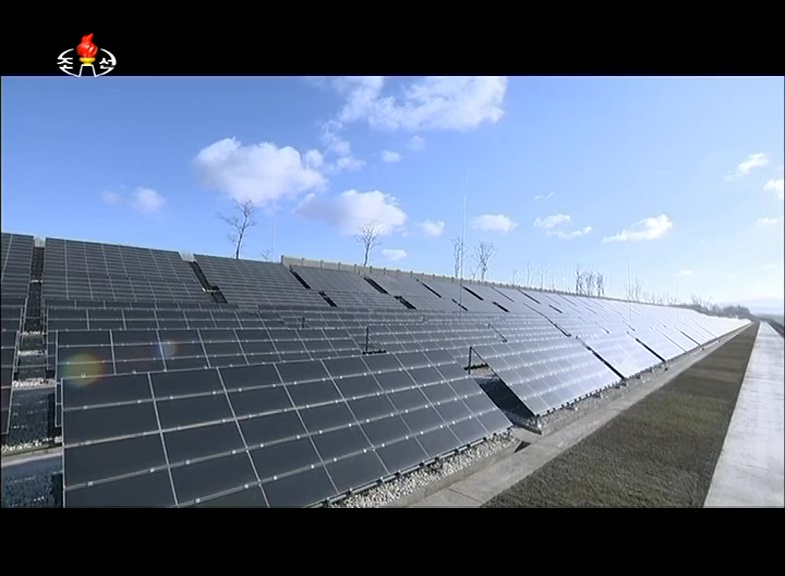
The power station was apparently built based on a directive from Kim Jong Un given during his tour of the fisheries station construction site in August 2015. During the visit, he “stressed the need to build a wind and solar power station on Nunggum Islet.”
Kim returned in January 2017 to inspect the construction of the fisheries station and power plant. At that time, state media reported the completed power station could deliver “hundreds of kw” to “satisfactorily meet the demands of the factory and the fishery station for electricity.”
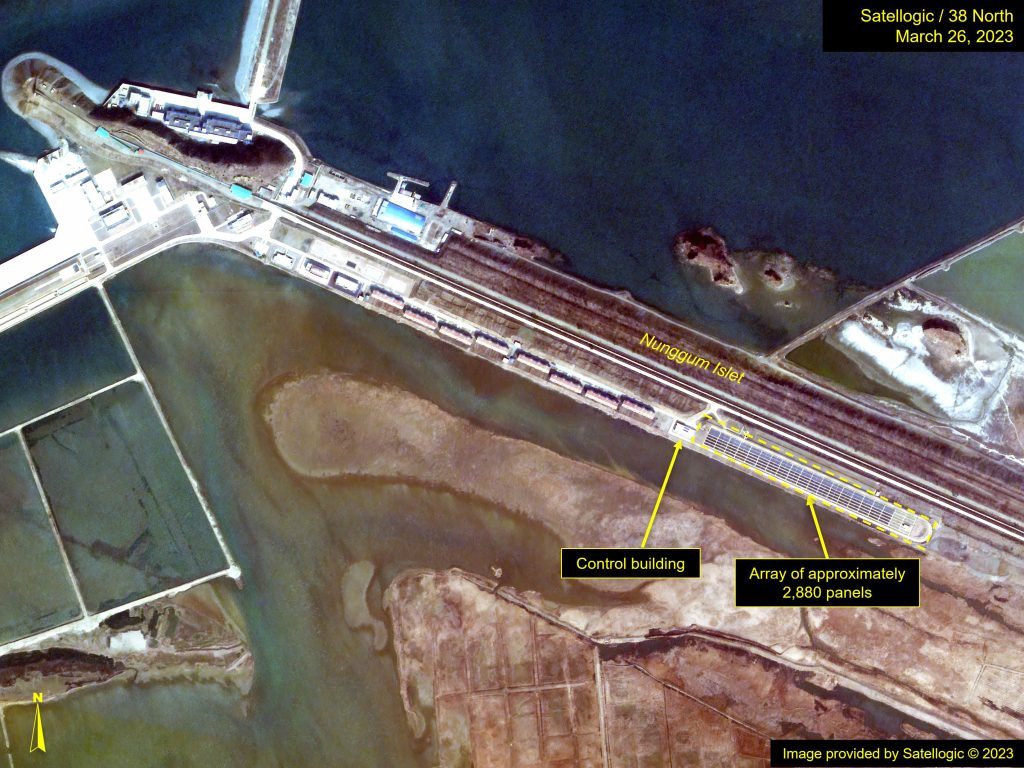
Sci-Tech Complex Solar Farm
The Science and Technology Complex (과학기술전당) on Ssuk Islet in Pyongyang was opened by Kim Jong Un in October 2015 and contains study halls with hundreds of computers. There are also lecture halls, auxiliary buildings focused on different science disciplines and a dormitory building for visiting scientists.
The solar farm is onsite and consists of four large arrays of solar panels that collectively help power the complex. The largest of the four is an array of 3,020 panels on the southern side of the islet alongside the Taedong River.
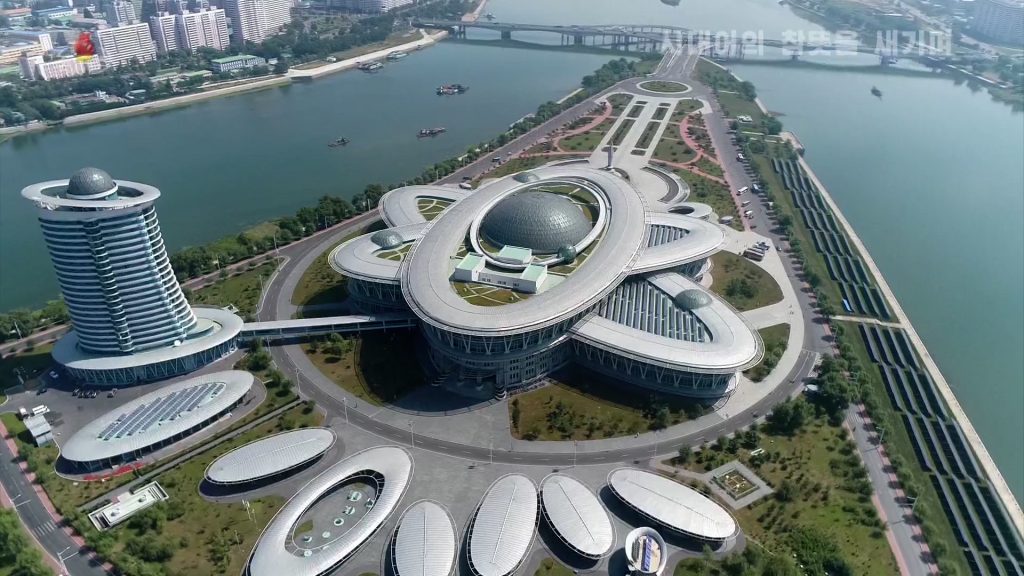
There are three additional large solar arrays within the grounds. Two on the roof of the main complex contain approximately 124 and 424 panels, and a third array on one of the auxiliary buildings consists of 161 panels. In total, the entire site holds over 3,700 panels, slightly more than what exists at the Sinuiju Solar Power Plant, although for mixed purposes.
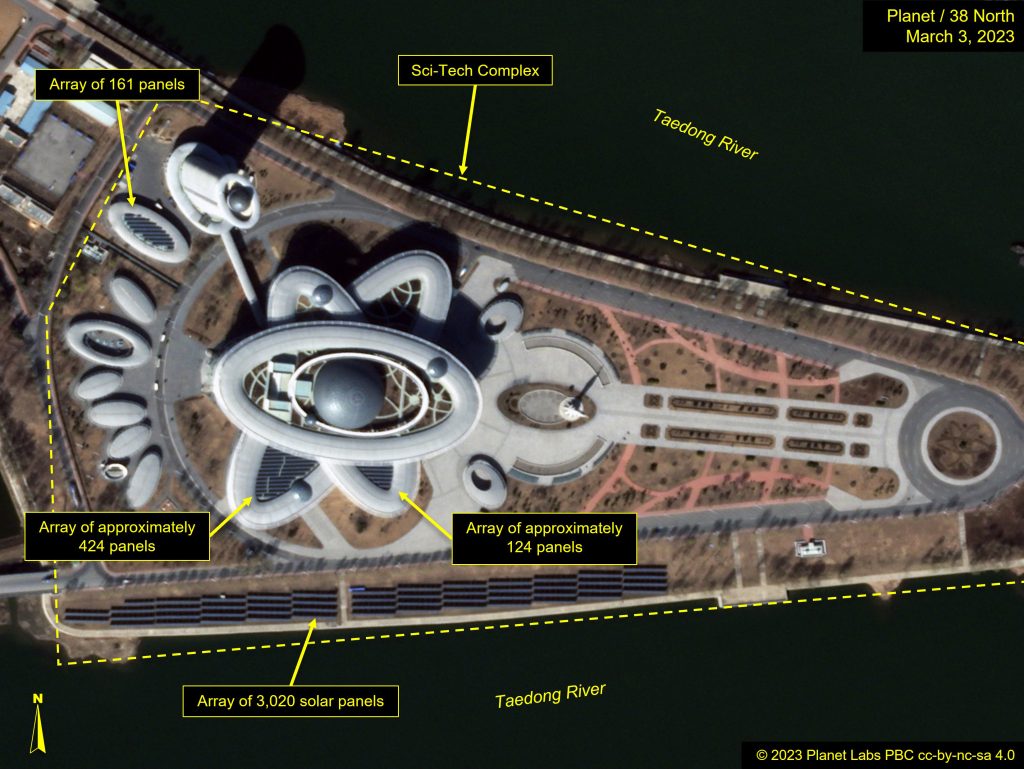
The energy from the panels is used to power “thousands of computers and various other facilities as well as lighting,” according to a profile carried in state media last year. A 2020 article said surplus energy is transmitted to the grid, but this appears to be secondary to powering its own operational needs.
Unryul Research and Development Solar Farm
This small-scale solar farm was built in 2018 and 2019 as a collaboration between Kim Il Sung University and Kim Chaek University of Technology. It opened in Unryul, South Hwanghae Province, in the first half of 2019 and consists of five and a half rows of approximately 160 solar panels per row.
While smaller than some other facilities, it is notable because it demonstrates cooperation between North Korea’s top two science and technology universities. While small in size, the power project appears to transfer its energy into North Korea’s electricity grid, according to video of the plant on state television. [3]
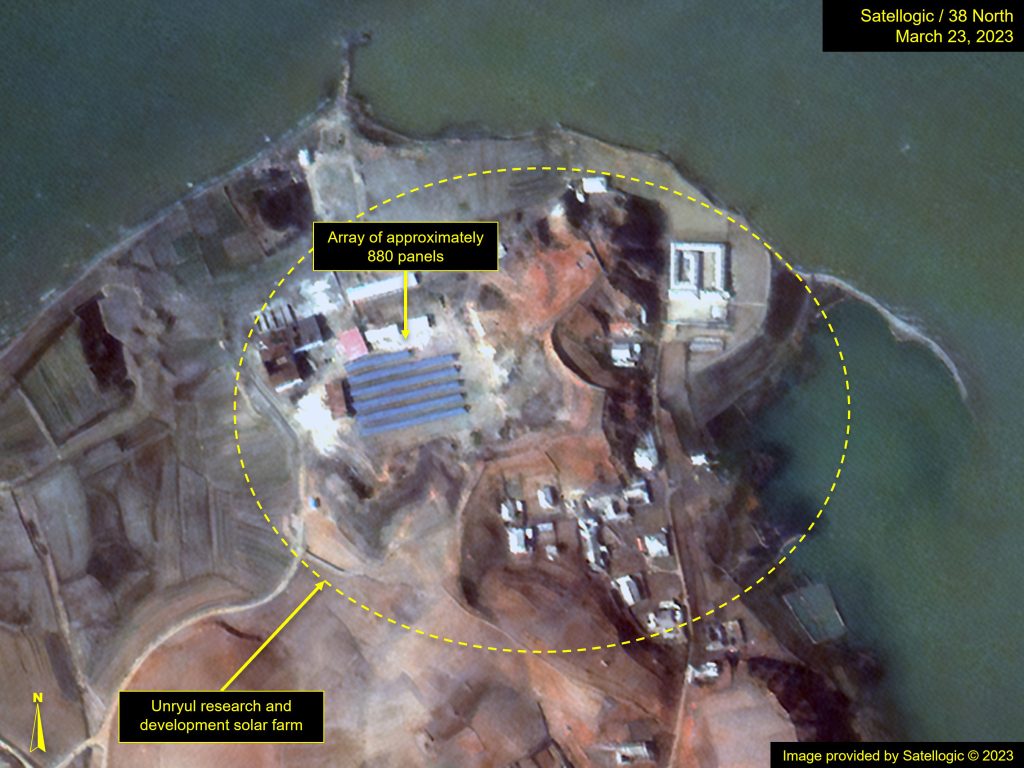
The Korean People’s Air Force (KPAF) Unit 1016 Wind and Solar Farm
The KPAF Unit 1016 Wind and Solar Farm was one of the first locations in the country to install large wind turbines (more in the wind power article coming later). Sometime between April 2014 and March 2015, a solar farm was also added.
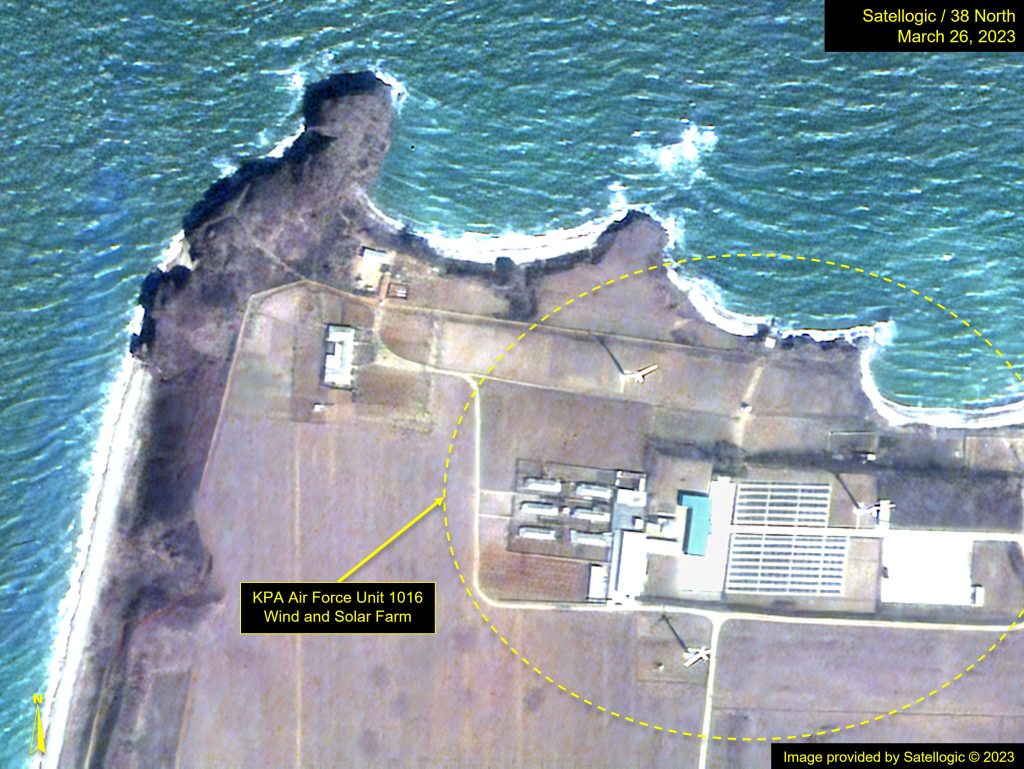
The installation is notable not just because it was one of the first and largest solar installations to be built in North Korea but also because it is one of the few solar sites that has been visited by Kim Jong Un.
Based on state media reports, Kim visited the site at least twice: once in late November 2011 alongside his father, Kim Jong Il, when the wind farm had just been put into operation. His next reported visit was in March 2015, that time as leader, just after the solar farm was completed. State media credited the site as a “legacy of Kim Jong Il.”
KCNA reported that during his inspection, Kim praised both KPAF Unit 6556 and “officials, scientists and technicians” from the State Academy of Sciences, indicating that they played a part in the design and construction of the solar farm.
Coming Next
The next installment in this series will look at large and notable solar installations in Pyongyang.
- [1]
Based on data from Global Solar Atlas 2.0, a free, web-based application is developed and operated by the company Solargis s.r.o. on behalf of the World Bank Group, utilizing Solargis data, with funding provided by the Energy Sector Management Assistance Program (ESMAP). For additional information: https://globalsolaratlas.info CC-BY 4.0.
- [2]
Global Solar Atlas 2.0, a free, web-based application is developed and operated by the company Solargis s.r.o. on behalf of the World Bank Group, utilizing Solargis data, with funding provided by the Energy Sector Management Assistance Program (ESMAP). For additional information: https://globalsolaratlas.info.
- [3]

